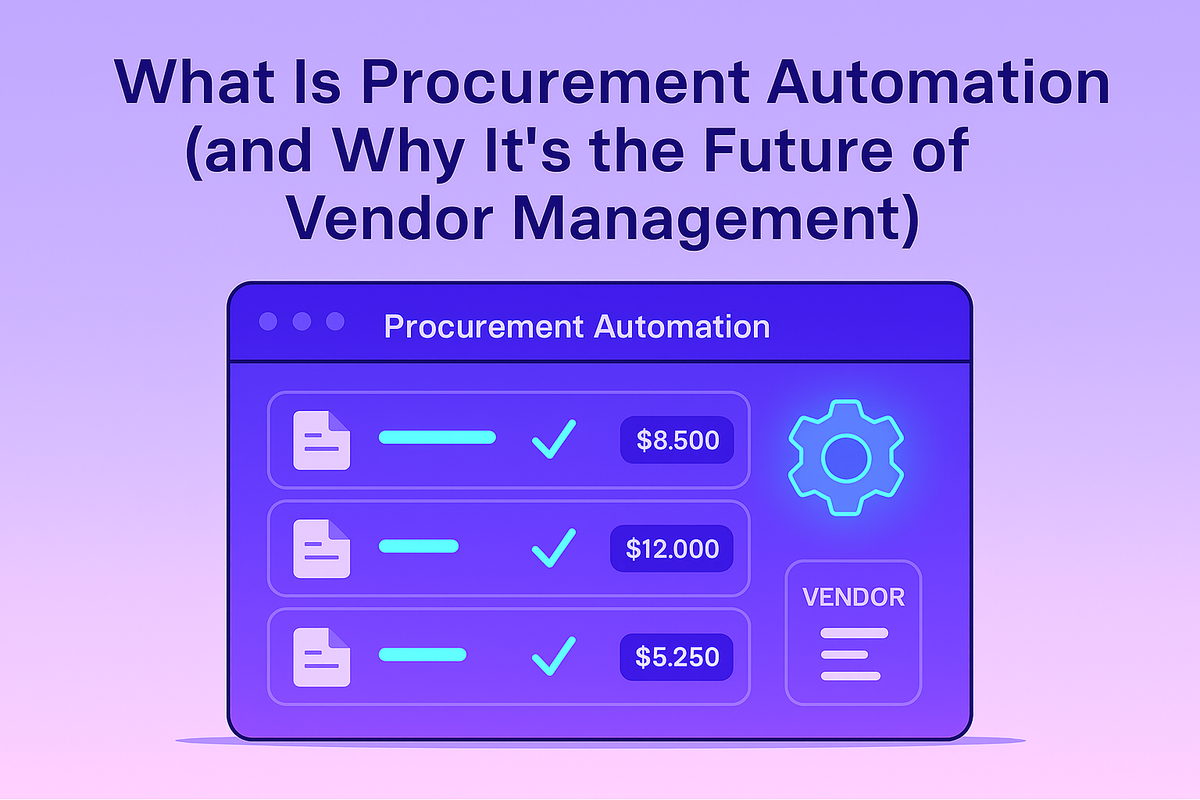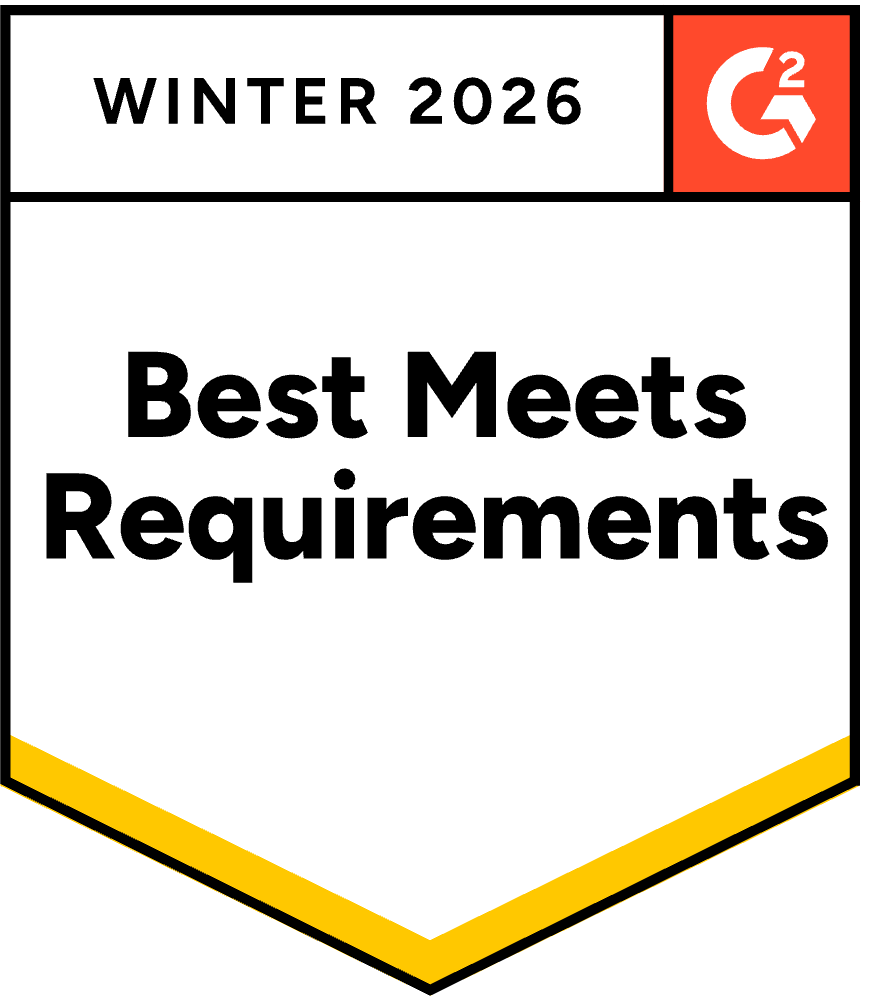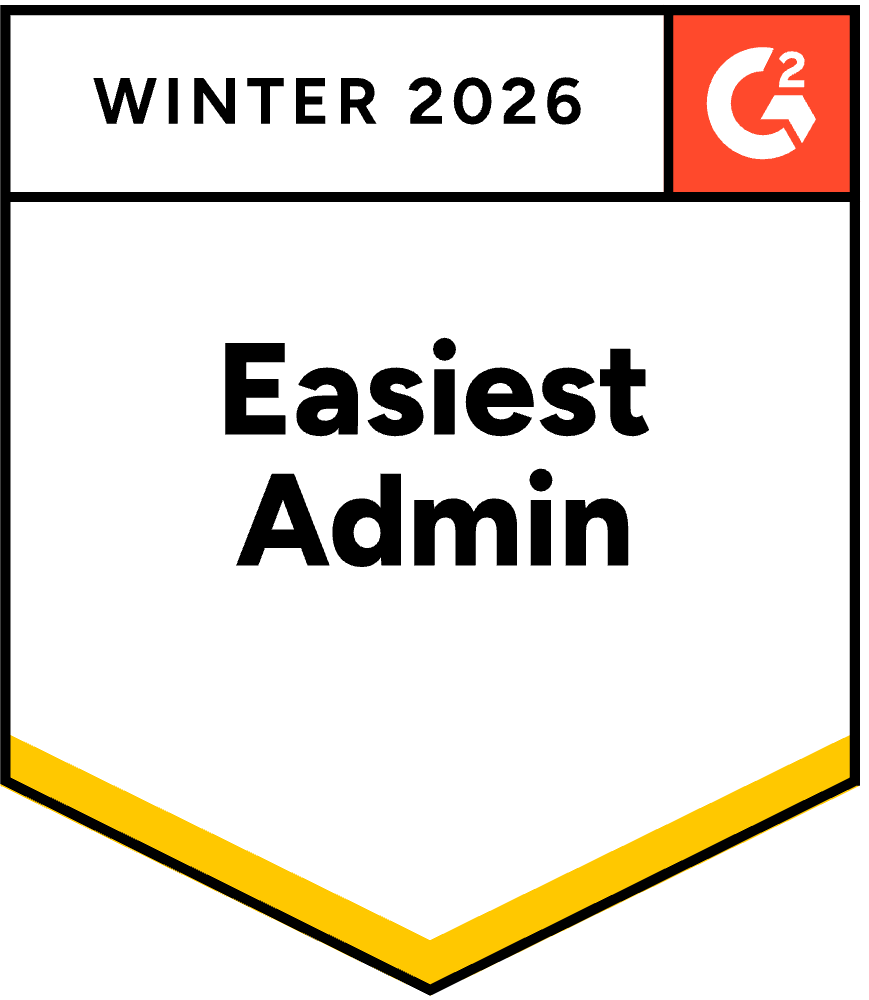The RFI Sales Playbook: 9 Tips to Win in 2026
October 30, 2025
By
Evie Secilmis

When a potential customer's RFI asks, "Do you support SSO?", they aren't just asking a technical question. They're really asking, "Can we enforce identity at scale and reduce our security risk with your solution?" Answering just the surface-level query is a missed opportunity. The most effective sales engineers understand that every RFI question is ultimately about risk, fit, or governance. A successful rfi sales process is built on decoding that intent and responding with clarity and proof. This guide will teach you how to read between the lines of an RFI, address the buyer's core concerns, and build the technical confidence needed to move the deal forward.
What is a Request for Information (RFI)?
If you’re in sales, you’ve likely come across the acronym RFI. It stands for Request for Information, and it’s a standard part of how many companies make purchasing decisions. Think of it as an introductory handshake. A potential customer has a need, but they aren't quite sure what the solution looks like or who can provide it. They issue an RFI to gather general information from various suppliers about their products and services. The primary goal is to educate themselves on the market landscape, understand the available options, and identify potential partners who might be a good fit for their project. It’s a fact-finding mission that helps them make smarter, more informed buying decisions down the line.
Core Definition and Purpose
At its heart, an RFI is a formal document a company uses to collect written information from potential vendors. It’s one of the earliest steps in the procurement process, designed to cast a wide net and see who’s out there. The buyer outlines their business challenge or need in broad strokes and asks suppliers to explain their capabilities and approach. This isn't about getting a price quote or a detailed project plan just yet. Instead, the purpose is to compare vendors at a high level, learn about different solutions, and narrow down the field to a shortlist of qualified candidates who will be invited to the next stage of the process, which is often a Request for Proposal (RFP).
Key Characteristics of an RFI
Understanding what makes an RFI different from other requests is key to responding effectively. Unlike its more detailed cousins, the RFP and RFQ, the RFI is less about commitment and more about exploration. It’s a low-pressure way for both the buyer and the seller to feel each other out. The buyer gets a snapshot of the market, and the seller gets a chance to introduce themselves and their unique value without having to draft a full-blown proposal. This initial exchange sets the tone for the entire potential relationship, making it a critical first impression.
Non-Binding Nature
One of the most important things to remember about an RFI is that it's non-binding. When a company sends one out, they aren’t committing to buying anything, and by responding, you aren’t locked into a deal. It’s purely an information-gathering exercise. This lack of commitment is beneficial for both sides. It allows the buyer to explore options freely without pressure, and it gives you, the seller, an opportunity to qualify the lead. You can decide if the potential project aligns with your business goals before investing significant time and resources into a formal proposal.
Focus on Capabilities, Not Price
While an RFP or RFQ gets deep into the weeds of pricing and specific deliverables, an RFI keeps things at a higher level. The buyer is primarily interested in your company’s capabilities, experience, and general approach. They want to know what you do, how you do it, and what makes you different from your competitors. Because RFIs are simpler and less detailed, they help the buyer quickly filter out suppliers who don’t meet their basic needs. For you, this means your response should focus on telling a compelling story about your strengths and expertise, rather than getting bogged down in financial details.
Who Issues an RFI?
Typically, the buyer—the company that wants to purchase a product or service—is the one who issues the RFI. It’s a foundational step they take before they’re ready to solicit formal proposals. This usually happens when a project is still in the planning stages. The buyer might have identified a problem but isn't sure of the best way to solve it. By issuing an RFI, they can tap into the collective knowledge of the market to understand potential solutions. It’s their way of doing due diligence and ensuring they have a solid foundation of information before moving forward to more formal procurement stages like an RFP or RFQ.
The RFI’s Role in the Procurement Process
The RFI is more than just a document; it’s a strategic tool that marks the beginning of the formal procurement journey. It serves as the bridge between a buyer’s initial problem identification and their search for a concrete solution. By starting with an RFI, companies can efficiently survey the vendor landscape, saving time for everyone involved. It prevents unqualified vendors from wasting resources on a detailed proposal and ensures the buyer only receives serious offers from companies that are genuinely a good fit. A well-managed RFI process lays the groundwork for a smoother, more effective RFP stage and ultimately leads to a better purchasing outcome.
RFI vs. RFP vs. RFQ: Knowing the Difference
Navigating the world of sales documents can feel like swimming in an alphabet soup of acronyms. RFI, RFP, RFQ—they all sound similar, but each serves a distinct purpose in the buying process. Understanding the differences is crucial for crafting the right response at the right time. Misinterpreting the request can lead to a misaligned response, wasting your time and potentially costing you the deal. Each document signals a different stage in the buyer's journey, from initial exploration to the final purchase decision, and requires a unique approach from your sales team.
RFI: The Research Phase
The RFI kicks things off. Think of it as the research or discovery phase. The buyer has a need but is still exploring their options. They use the RFI to gather general information about vendors, their services, and the solutions available in the market. The goal here is purely educational. They are learning what’s possible and identifying a pool of potential suppliers. Your response should be informative and focused on your core competencies, helping the buyer understand who you are and what you bring to the table without getting into specifics about pricing or implementation.
RFP: The Solution Phase
Once the buyer has reviewed the RFI responses and created a shortlist of qualified vendors, they move on to the Request for Proposal (RFP). This is the solution phase. The buyer now has a clearer idea of what they want and invites you to propose a specific solution to their problem. An RFP is much more detailed, often including specific requirements, project scope, and evaluation criteria. Your response needs to be a comprehensive proposal that outlines exactly how you will meet their needs, along with timelines, deliverables, and, of course, pricing.
RFQ: The Pricing Phase
The Request for Quotation (RFQ) typically comes last. This is the pricing phase, used when the buyer knows exactly what product or service they want to buy. The specifications are clear, and the primary factor in their decision is cost. For example, a company might send out an RFQ for a specific number of software licenses or a set quantity of materials. The focus is almost entirely on getting the best possible price. Your response to an RFQ should be a straightforward quote that is competitive and clearly breaks down all associated costs.
How a Strong RFI Response Influences the RFP
Don’t underestimate the power of a great RFI response. While it’s an early, non-binding step, it’s your first real chance to make an impression and shape the buyer’s thinking. A well-crafted response can do more than just get you on the shortlist; it can actually influence the content of the subsequent RFP. Buyers often use the language, ideas, and information from standout RFI responses to frame their requirements in the next stage. By providing a clear, insightful, and helpful response, you position yourself as a knowledgeable partner and can subtly guide the buyer toward a solution that plays to your strengths.
Understanding the Buyer's Perspective
To truly succeed in the RFI process, you need to step into the buyer's shoes. They aren't sending out these documents to create more work for you or for themselves. They are navigating a complex purchasing decision and are looking for a partner they can trust to help them solve a real business problem. They are often under pressure to find the best solution at the right price, and the RFI is their tool for cutting through the noise. By understanding their motivations and what they hope to achieve, you can tailor your response to meet their needs more effectively and build a stronger connection from the very beginning.
What to Expect in an RFI Document
When you receive an RFI, it will typically contain a few key sections. You can expect a brief overview of the buyer’s company and the challenge they are trying to address. The document will then ask for information about your company, including your history, resources, and capabilities. It will also likely outline some minimum requirements to help screen out unsuitable vendors early in the process. The questions are usually open-ended, designed to encourage a descriptive response rather than a simple yes or no. The goal is for the buyer to get a holistic view of your organization and your potential as a future partner.
Why Buyers Use RFIs
Buyers use RFIs for several strategic reasons. First, it’s an efficient way to understand the overall market. It helps them quickly get up to speed on the latest trends, technologies, and vendor offerings without having to schedule dozens of individual meetings. Second, RFIs can help them discover innovative solutions they may not have been aware of. A vendor might present a novel approach that the buyer hadn't considered, opening up new possibilities. Ultimately, the RFI process empowers buyers to make a more confident, well-researched decision when it’s time to move forward with an RFP and select a long-term partner.
RFI Best Practices for Sales Engineers (2025 Guide)
How technical teams streamline RFIs, protect bandwidth, and win more enterprise deals
RFIs are no longer “early-stage paperwork.” In modern enterprise cycles, they are technical credibility checks that span architecture validation, data security, AI governance, and readiness to scale.
Before continuing, you can review our full RFI definition — this post builds on it.
Handled correctly, RFIs accelerate deals, build trust with technical stakeholders, and protect SE time.
Handled poorly, they drain hours and stall momentum.
✅ 1. Treat the RFI as Discovery — Not a Form Fill
RFIs are now strategic discovery steps.
Before answering:
- Clarify technical requirements
- Confirm identity + provisioning expectations (SSO, SCIM)
- Understand security & compliance scope
- Align on buying timeline + success criteria
If you need a refresher on where RFIs fit in the buying cycle, visit our RFI vs RFQ vs RFP guide and our glossary entries for
These reinforce terminology consistency across your team.
✅ 2. Answer the Question Behind the Question
Every RFI question is ultimately about risk, fit, or governance.
Examples:
What Are They *Really* Asking?
Map common RFI prompts to the real intent, what to include, and proof to attach.
| Buyer question | What they really mean | Include in your answer | Evidence to attach | Primary owner |
|---|---|---|---|---|
| Do you support SSO? | Can we enforce identity at scale and reduce risk? | Supported IdPs, SAML/OIDC, SCIM, MFA, session controls, just-in-time provisioning | SSO setup guide, SCIM scope list, roles matrix | IT / SE |
| Where is data stored? | Are you compliant with residency and privacy rules? | Regions available, residency controls, data segregation, tenant isolation | DPA, subprocessor list, architecture diagram with regions | Security / Legal |
| How long do you retain data? | Can we meet regulatory and customer deletion timelines? | Default retention, configurable policies, deletion timelines, backups purge policy | Data lifecycle policy, backup retention table | Security / Compliance |
| Which subprocessors do you use? | Do any third parties introduce risk? | Current list, services provided, regions, security attestations, change notification process | Live subprocessor list, SOC reports from critical vendors | Legal / Security |
| Is data encrypted? | Will you prevent unauthorized access if systems fail? | Encryption at rest and in transit, key management, TLS version, HSM or KMS details | Crypto standard summary, key rotation policy | Security / Eng |
| Describe incident response | Are you prepared and transparent under pressure? | IR stages, RACI, notification SLAs, past exercises, status page | IR policy, tabletop report, status page link | Security |
| What AI models do you use? | Is AI safe, governed, and explainable? | Model types, isolation, grounding, PII handling, human review, auditability | AI governance policy, eval results, red-team summary | Product / Security |
| How accurate are AI outputs? | Can we trust outcomes for real work? | Evaluation methodology, benchmarks, rejection/override paths, hallucination controls | Metric dashboard, QA process, sample audits | Product / SE |
| Do you have audit logs? | Can we trace actions for forensics and compliance? | Events captured, retention, export, SIEM integration, tamper controls | Log schema, SIEM guide, sample exports | SE / Security |
| Do you support on-prem or VPC? | Can we meet strict network and data control policies? | Available deployment modes, networking requirements, data egress controls | Network diagram, firewall rules, VPC peering guide | SE / Eng |
| What roles and permissions exist? | Can we enforce least privilege by function? | RBAC model, custom roles, approval flows, segregation of duties | Roles matrix, permission catalog | Product / SE |
| What integrations are available? | Will this fit our workflows without custom builds? | Native integrations, API coverage, webhooks, rate limits, auth methods | Integration catalog, API docs, sample payloads | SE / RevOps |
| What is your uptime SLA? | Is reliability good enough for critical use? | SLA target, credits, maintenance windows, real uptime history | SLA doc, status history, SRE targets | Eng / CS |
| How do you handle backups? | Can you recover quickly with minimal data loss? | Backup cadence, geo-redundancy, RTO/RPO, restore testing | BCP/DR plan, last restore test report | Eng / Security |
| Which certifications do you hold? | Has a third party validated your controls? | SOC 2 type, ISO scopes, HIPAA posture, FedRAMP context | SOC 2 letter, ISO certs, attestations | Security / Compliance |
| Do you perform pen tests? | Are vulnerabilities found and fixed proactively? | Frequency, scope, vendor, remediation timelines, customer summary access | Recent summary, vuln management policy | Security |
To speak the same language buyers use, see our security questionnaire glossary entry and AI glossary topics (model governance, hallucination prevention, auditability).
✅ 3. Lead With Technical Clarity
Enterprise SEs win RFIs by making architecture obvious and trusted.
Include:
- High-level architecture
- Data flow summary
- Identity & SSO controls
- RBAC model
- Logging + audit trails
- Integration paths
See how teams maintain approved technical language with Knowledge Map.
✅ 4. Prove Accuracy & AI Governance — Don’t Hand-Wave It
Enterprises expect responsible AI proof, not slogans.
Explain:
- Evaluation and testing approach
- Human-in-loop validation
- Audit trail visibility
- Data handling and isolation
- Hallucination prevention mechanisms
More on this in our proposal automation guide and AI response governance content.
✅ 5. Use a Governed Answer Library
Great SE organizations don’t rewrite the same 20 architecture answers in Slack threads. They build a controlled answer library.
Document and reuse approved language for:
- Deployment + identity
- Encryption + access controls
- AI behavior + oversight
- Integrations + API patterns
- Data lifecycle policies
You can do this inside Ask Iris + Knowledge Map to ensure consistency and speed.
✅ 6. Decline Low-Value RFIs
A modern SE qualification principle:
Bad RFIs burn good engineers.
Decline or re-scope when:
- No clear pain or timeline
- No technical stakeholder engaged
- It’s just vendor “market research”
- Biased scoring suggests incumbent preference
Protect cycles. Focus where solution fit and buying intent exist.
✅ 7. Set Process Expectations Early
Before beginning responses, clarify:
- Timeline & review approach
- SME involvement required
- Sections needing security/legal sign-off
- When discovery will occur
- Technical next step after RFI
Enterprise buyers value structured technical partners.
✅ 8. Avoid Roadmap Risks
Promise control, not hope.
Instead of:
“Launching soon.”
Use:
“In roadmap review — we prioritize based on validated enterprise use cases.”
Trust is built through accurate scoping + clear future commitments, not hype.
✅ 9. Close With a Technical CTA
Your RFI shouldn't end with a PDF — it should end with momentum.
Recommended CTA:
“Next ideal step: architecture + security review to validate deployment and alignment.”
You can include references to similar deployments from Iris customer success stories.
A Note on RFIs in Government Procurement
Working with government agencies introduces a unique set of rules and expectations, but the core purpose of an RFI remains the same. Public sector organizations use RFIs to conduct market research, understand vendor capabilities, and refine the scope of a project before committing to a formal Request for Proposal (RFP). Responding to these requests is your first opportunity to build a relationship and demonstrate your expertise within the structured confines of public procurement.
Responding to Government Requests
When a government agency issues an RFI, they are looking for partners who can help them clarify their needs and understand the available solutions. Think of your response as less of a sales pitch and more of a strategic consultation. This is your chance to educate the agency on the latest technology, share relevant case studies, and subtly shape their requirements to align with your strengths. A thoughtful, detailed response builds trust and positions your company as a credible expert, which can give you a significant advantage when the formal RFP is released. Handled correctly, these early interactions can accelerate the procurement cycle and establish your team as a preferred partner.
Key Resources for Government Contractors
Navigating the federal procurement landscape can feel overwhelming, but there are excellent resources available to guide you. The U.S. General Services Administration (GSA) is a great place to start. The GSA provides official guidance and training materials to help contractors understand the nuances between RFIs, RFPs, and Requests for Quotations (RFQs). They offer webinars and guides specifically designed to help businesses, including small businesses, understand why it’s so important to reply to these notices. Tapping into these resources ensures your team is following the correct procedures and submitting responses that meet the agency's expectations from the very beginning.
🎯 Why SE-Led RFIs Win
SE-driven RFI excellence delivers:
- Higher fit rates
- Faster technical validation
- Fewer rework cycles
- Stronger trust with IT + security
- Better use of limited presales capacity
For presales teams scaling response workflows, explore:
Or move straight to activation:
👉 Request a demo
📚 Related Resources
- Core definition: What is an RFI?
- Comparison: RFI vs RFQ vs RFP
- Deep dive: Security Questionnaires
- Category context: Proposal Automation
Frequently Asked Questions
Why should my technical team spend so much time on an RFI if it's non-binding? Think of the RFI as your first technical interview with the customer. While it isn't a commitment to buy, it's their first real look at your credibility and expertise. A strong, thoughtful response does more than just get you to the next round; it builds trust with their technical stakeholders and can even influence how they write the formal RFP. Investing time here allows you to shape the conversation around your strengths, making it a strategic play that pays off throughout the entire sales cycle.
What's the biggest mistake sales engineers make when responding to RFIs? The most common misstep is answering questions literally instead of addressing the underlying concern. When a buyer asks, "Do you support SSO?", they're really asking, "Can you help us reduce security risks as we scale?" Simply answering "yes" is a missed opportunity. The best responses address the intent by explaining how your SSO capabilities, session controls, and provisioning options solve their core security and governance challenges, proving you understand their world.
How do I handle questions about future features without overpromising? It's a balancing act, but honesty is always the best policy. Avoid making concrete promises or giving specific timelines for features that aren't publicly committed. Instead, be transparent about your process. You can say something like, "That capability is in roadmap review, and we prioritize development based on validated enterprise needs like yours." This shows you're listening and forward-thinking without locking your team into a deliverable that might change.
When is it actually a good idea to say "no" to an RFI? Protecting your team's time is a critical skill. It's smart to decline an RFI when the request feels like a fishing expedition for market research rather than a serious evaluation. Red flags include a lack of clear business pain, no defined timeline, and no access to the technical stakeholders who would actually use your solution. A well-qualified "no" allows your best engineers to focus their energy on deals where there is genuine buying intent and a strong potential for a partnership.
Our current RFI process is a mess. What's the first step to fixing it? The first and most impactful step is to stop rewriting the same answers from scratch every time. Start by creating a simple, centralized place for your team's best, most accurate responses to common technical questions about security, architecture, and compliance. Even a basic shared document is better than nothing. This creates consistency, saves countless hours, and serves as the foundation for building a more governed and efficient response workflow.
Key Takeaways
- Look beyond the surface-level questions: Every RFI question is really about risk, fit, or governance. Answering the buyer's true underlying concern, not just the literal question, is how you build trust and technical credibility early on.
- Show, don't just tell: Back up every claim with tangible proof. Instead of making promises, provide architecture diagrams, security attestations, and clear AI governance policies to make your solution's value obvious and trustworthy.
- Protect your team's time with a smart process: Not all RFIs are worth the effort. Qualify opportunities to focus on deals with real intent, and use a governed answer library to respond quickly and accurately without reinventing the wheel for every request.
Share this post
Link copied!




















